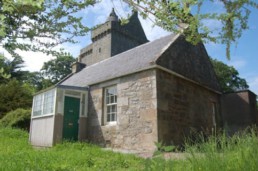
Photo credit: Historic Environment Scotland
Historic Environment Scotland (HES) is the lead public body concerned with protecting, understanding and sharing Scotland’s historic environment, for today and for the future. HES looks after 350 historic sites in Scotland from all periods in history; these range from castles to cairns, brochs to bothies, ironworks and much in between. They have a formal role in the planning system, with the protection of buildings of architectural or historic importance.
Ensuring the development of traditional skills is essential to look after Scotland’s historic and traditionally built heritage, HES is engaged with a training programme for apprentices in various trades such as stonemasonry, joinery and slating. The focus of HES is not just on well-known historic structures, but on the wide range of traditional buildings that makes up 20% of Scotland’s housing stock.
HES also gives advice on repair to homeowners and organisations on appropriate repairs to buildings of all types and research and publish best-practice guidance. The changing climate is obliging Scotland to review many aspects of its operations and work is ongoing to reduce energy consumption, adopt climate change risk assessments, develop energy efficiency improvements for buildings, progress resource minimisation and sustainable procurement.
Scotstarvit Tower Cottage
Scotstarvit Tower Cottage is a single-story stone-built cottage dating from 1850, located in rural Scotland. The existing oil-fired heating boiler, and no insulation, made this building difficult for the tenant to heat. With no gas, options for heating were limited. HES supported the landlord and the National Trust for Scotland, with a Technical Research Grant.
The existing oil-fired system was replaced by whole house infra-red system, delivering radiant heat to all rooms. Insulation was put into floors, walls and roof, using wood fibre board and a blown material behind existing wall linings. Secondary glazing was fitted to all windows. The existing chimney and hearth were kept open to assist in controllable passive ventilation. Clay paint was used in the redecoration to buffer humidity and minimise volatile organic compounds (VOC’s).
The cottage exterior and interior have remained looking much the same, and the building is now more comfortable for the tenant to live in and is significantly more energy efficient.
Principal Characteristics of the Renovation Works:
| Ownership type: | 1850 |
| Year of construction: | Circa 1920 |
| Energy performance: | Air pressure testing after the works showed that the air tightness had improved by 50% to 10 ACH. The tenant has found that heating costs have reduced by 25%. The percentage of carbon savings are much greater,having moved from a fossil fuel system to an electrical one. |
| Cost of works: | € 35,06 |
Historic Environment Repair Grant information from Historic Environment Scotland website: https://www.historicenvironment.scot/grants-and-funding/our-grants/historic-environment-repair-grant/
